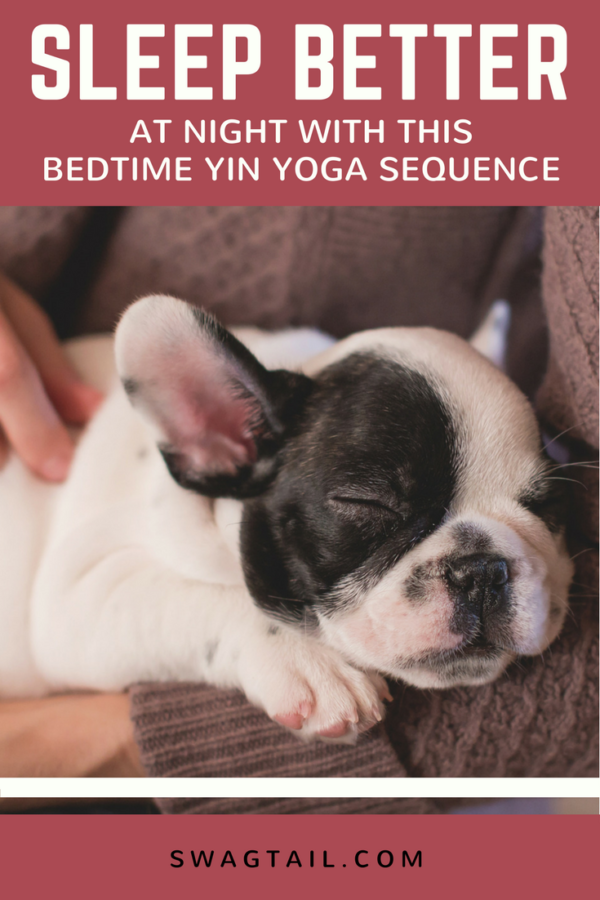 Yin yoga as a great way to prepare the body and mind for a good night’s rest. Now, I’m naturally a deep sleeper who falls into a slumber almost immediately, and can do so almost anywhere. In fact, there was one time my friend and I took a road trip from Redondo Beach, CA to San Diego. We piled in her black 4×4 Jeep Wrangler at 7 am, with the top down, ready for a spring adventure. It wasn’t long before we were cruising down the 405 freeway at a 75-mile-per-hour clip when I fell asleep. Yep, right in the middle of the wind and bouncy ride and the hum of other cars alongside of us, I just zonked out.
Yin yoga as a great way to prepare the body and mind for a good night’s rest. Now, I’m naturally a deep sleeper who falls into a slumber almost immediately, and can do so almost anywhere. In fact, there was one time my friend and I took a road trip from Redondo Beach, CA to San Diego. We piled in her black 4×4 Jeep Wrangler at 7 am, with the top down, ready for a spring adventure. It wasn’t long before we were cruising down the 405 freeway at a 75-mile-per-hour clip when I fell asleep. Yep, right in the middle of the wind and bouncy ride and the hum of other cars alongside of us, I just zonked out.
While I prefer to sleep in a bed over a moving vehicle, I often use yin yoga as a way to prepare for bedtime. The yin sequence below can be practiced at night, or any time of the day to cultivate internal awareness and calm the nervous system, and it can aid in your ability to sleep better on any given night. It’s also a great sequence to complete just before bed. Get ready for a deep sleep with this juicy sequence.
SEQUENCE OVERVIEW
This bedtime yin yoga sequence can be done in a 60-minute format. Guide your students through this with care, modifying as needed for each individual given their flexibility level, injury status, age, and current physical condition. As a result of their increased comfort level, their bodies can relax into a deeper sense of calm in preparation for sleep. It can also be soothing to close the eyes, since 80 percent of sensory input is derived from vision.
Props suggested: Block, bolster, blanket (or any household items that can be subbed for these)
Contraindications: This series involves many forward folds, so individuals with sciatica may need to modify greatly to participate and make sure the pelvis is rotating forward. Those with a spine injury preventing flexion will need to keep the spine more straight in each pose, or refrain from various yoga postures.
BEGIN THE YIN SEQUENCE
 Length: Sit for 5 minutes
Length: Sit for 5 minutes
Purpose: I recommend starting your practice seated, in any comfortable position (such as sukhasana or vajrasana or supported virasana). This way the upright body requires spinal stability and core strength to be in position. The lungs can also fully expand and contract, encouraging the mind into the practice with a focused breath work. If you’re just exhausted, then savasana would be another option.
Suggested Pranayama: A counted breath–inhale to count of 4, exhale to count of 6. By lenghtening the exhale, the body can shift into the parasympathetic mode, or the relaxation state.
POSTURE 1: STRADDLE
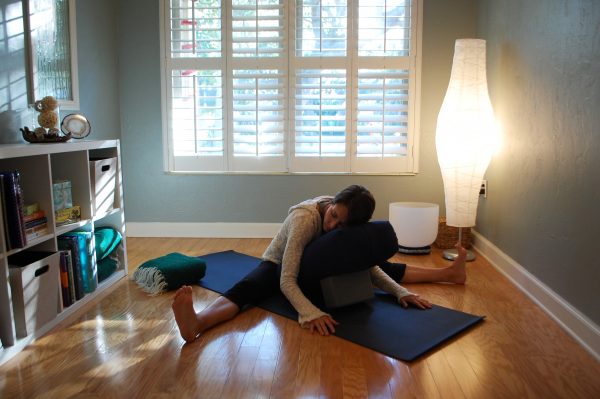 Length: Hold for 5 minutes
Length: Hold for 5 minutes
Purpose: This yoga pose will continue to minimize sensory input to increase the body and mind’s ability to release the day. The spine continues to lengthen, offsetting any compression from daily movements, and this yin posture also opens the hamstrings, hips, and groin.
Additional Support:
- Sit on a blanket, and keep the hips rotating forward.
- Bring the legs closer together to make the stretch easier.
- Use a bolster and props under the chest for support.
- Support the head with props, or your hands, to keep the neck relaxed.
Suggested Pranayama: Encourage an effortless breath, and allow the mind to watch the length of each inhale and each exhale. Have each student observe how the breath pattern compares to the structured breath count used in the above 10 minutes.
POSTURE 2: CATERPILLAR
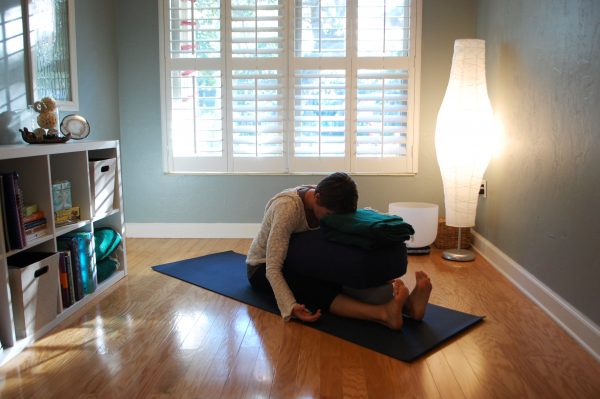 Length: Hold for 5 minutes
Length: Hold for 5 minutes
Purpose: The forward folds help turn the attention of the mind inward immediately. This will shift mental focus from the external, busy world to a more quiet internal landscape in order to prepare for deep sleep. And the entire back side of the body gets a stretch here, including the hamstrings, low back, rhomboids, shoulders, and entire spine.
Additional Support:
- Sit on a blanket, and keep the hips rotating forward.
- Bend the knees as much as needed (or place rolled blanket under the back of the knees) to offset tight hamstrings or low back regions.
- Place blankets or a bolster under your torso for additional support and relaxation.
- Support the head with some sort of prop to remove any strain in the neck.
Suggested Pranayama: Continue with breath count above, and send the focus of the breath to the back of the kidneys/adrenal area. The adrenal glands release hormones to deal with stress, and the goal is to focus on relaxation in this region–giving the glands permission to rest and relax for the night of sleep ahead.
POSTURE 3: HALF SHOELACE, VARIATION
Length: Hold for 5 minutes.
Purpose: While continuing to decompress the spine here, the outer hips will also begin to lengthen. The outer hips work hard throughout the day, when walking or standing, to provide stability for the pelvis. Give them a break here! Through this juicy stretch, you’ll prepare the gluetus medius, piriformis, and other hip muscles for bedtime.
Specific Instructions: Start with the right knee on top.
Additional Support:
- Remain more upright with the spine for those with tight hips and hamstrings.
- Place more weight in the arms to offset intensity in the legs, using props under the hands, if needed.
- Support the chest with a bolster, or the head with a block.
Suggested Pranayama: Use the inhale to lengthen the spine, the exhale to relax and fold. While not much movement will couple with the breath, the attention to a longer spine will help keep the body safe in this yin yoga posture.
Counter pose: Shake out the legs. Students can also bend knees and move them in windshield wiper fashion to free any stagnation in the hips and hamstrings. This can be done for about a minute before moving on to the next yin yoga pose.
POSTURE 4: CATERPILLAR, REPEATED
 Length: Hold for 5 minutes
Length: Hold for 5 minutes
Purpose: Repeating this posture will neutralize the hips, as well as ground the body with both sitting bones on the mat.
Additional Support:
- Same options apply as in posture 2
Suggested Pranayama: Soften the breath from a controlled focus again. Allow the mind to scan the body, observing the difference between both legs, as well as any variation in sensation on both sides of the hips.
POSTURE 5: HALF-SHOELACE, SECOND SIDE
Length: Hold for 5 minutes.
Purpose: Prepare the body for sleep by bringing balance to both sides of the body.
Specific Instructions: Place the left knee on top in this yoga pose for round 2.
Additional Support: Same as noted in Posture 3 notes.
Suggested Pranayama: See Posture 3 notes.
Counter pose: Shake out the legs, or bend the knees and move legs in windshield wiper motion.
POSTURE 6: SAVASANA
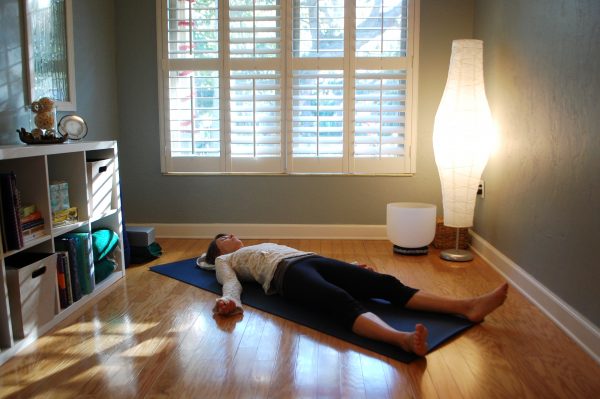
Length: Hold for 2 minutes.
Purpose: Take a sneak peak of the body position that would actually be assumed at bedtime. This pose will neutralize the pelvis in a reclined position. In addition, it will hit the reset button for the spine before moving into twists.
Additional Support:
- Bend the knees to alleviate tension in the low back.
- Place blankets under the back of the knees so that the legs can relax.
Suggested Pranayama: Allow the body to breathe itself. Pay attention to sensations on the skin, the heartbeat, and any other subtle energetic movements within the body.
POSTURE 7: RECLINING TWIST
Length: Hold for 5 minutes.
Purpose: Now that the spine has been elongated in this yin yoga sequence, twisting it can restore equilibrium to the nervous system. Releasing any remaining tension out of the back here paves the way for the rest of the body to ease into sleep.
Specific Instructions: Hug the right knee into the chest first. Allow movement of the ankle joint, if desired. Take 3-5 rounds of breath here, allowing the hip flexor on the extended left leg to release. Then, when ready, shift the hips to the right before taking the spinal twist.
Additional Support:
- Allow the opposite shoulder to drop toward the ground, but refrain from pushing it there. Place a blanket behind the shoulder, if needed.
- Place a block, blanket, or bolster under the bent knee to support the yoga pose.
- Adjust the angle of the knee, as needed. Knees closer to the chest will increase the stretch in the upper back, while knees in a lower position will lengthen the lumbar spine.
Suggested Pranayama: Soften the breath as it comes in to the body. Focus on relaxing the abdomen with each exhale. The torso, which usually holds tension to keep the body upright (as well as process emotional stress), can be taught to relax with each breath. This can send a strong signal to the entire body that it’s almost bedtime.
POSTURE 8: SAVASANA
Take two minutes in Savasana to neutralize the spine again.
POSTURE 9: RECLINING TWIST, SECOND SIDE
Length: Hold for 5 minutes.
Purpose: Bring balance to the body before going to sleep.
Specific Instructions: Hug the left knee into the chest first. Repeat ankle motions, if done on the first side. Then, shift hips to the left before twisting to the right.
Additional Support:
- Same options as Posture 7
Suggested Pranayama: Same as Posture 7
POSTURE 10: SAVASANA

Length: Hold for 5 minutes.
Purpose: While the body has been still throughout much of the yin sequence, the goal of savasana is to internalize the changes made throughout each posture. This is literally the same level of relaxation we want to experience during sleep.
Specific Instructions: if at home, students might actually take savasana in their bed. If still at a studio, then have students up their comfort level with blankets, props, and eye pillows.
Additional Support:
- Use any props as needed, like one would in bed, for a great night’s sleep.
- Take the arms and legs wide, like one might starfish in bed, to mirror the ability to receive slumber.
Suggested Pranayama: A few deep rounds of breath, or at least a few good sighs out of the mouth, are suggested before letting go of any conscious control of the breath.
END THE YIN SEQUENCE
Return students to an upright position, while keeping the eyes closed down. This keeps sensory input at bay. Encourage them to notice any sensations of relaxation or ease. Have them take a mental picture of this, or internalize those sensations. Memorize them, as they can be used at a later time when actually preparing for bedtime.


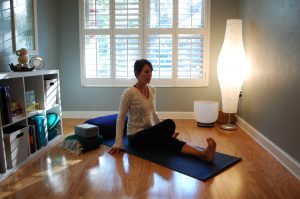

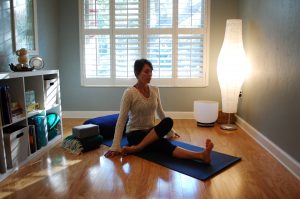
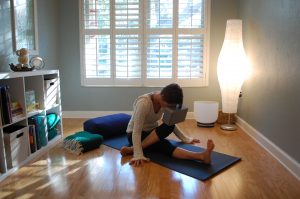
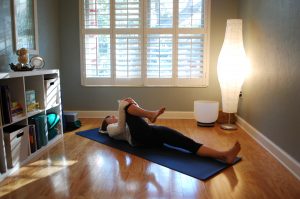
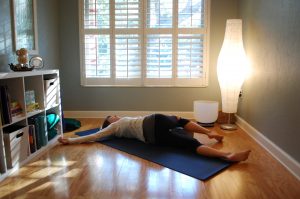
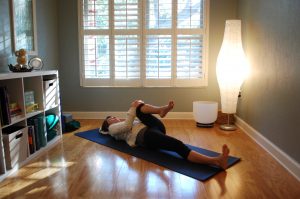
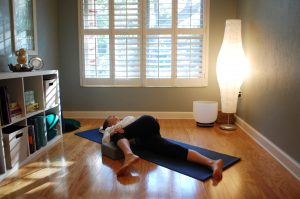

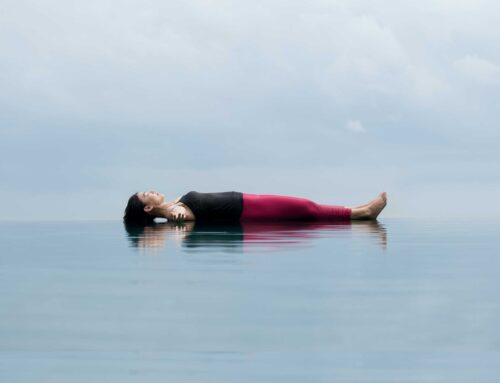

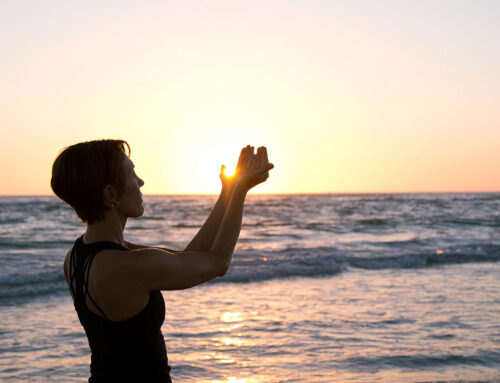
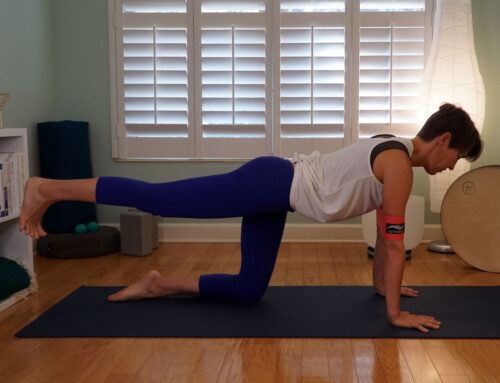
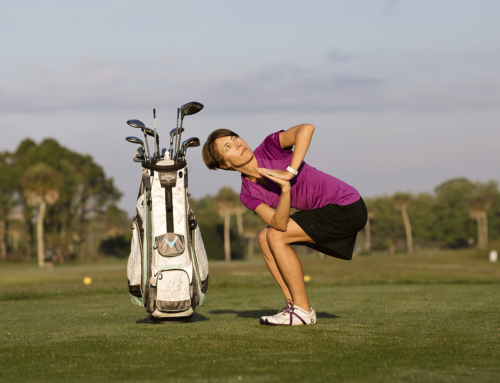
Hi Tommie,
Thank you for the feedback! If you have any special requests for class sequences, please let me know.
Kym
Thank you for your comments. If you have any questions or material you would like us to cover in particular, we are happy to help!